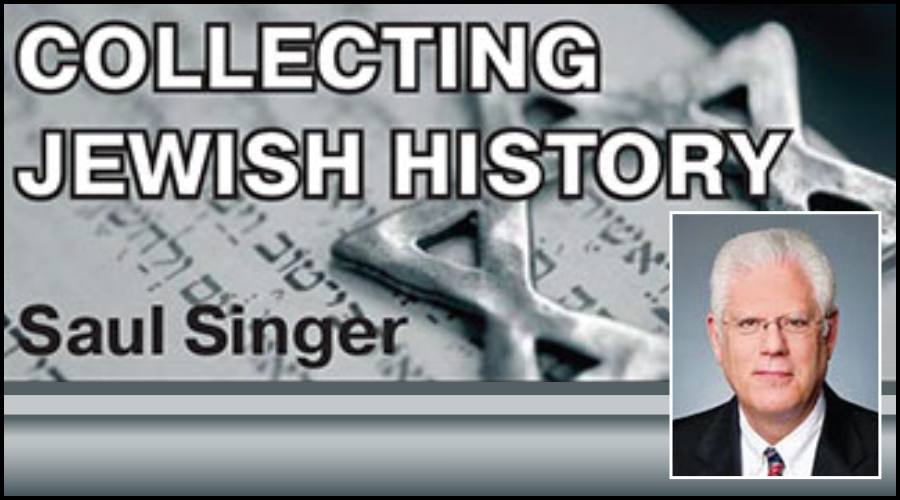Alfred Stieglitz (1864-1946) is perhaps the most important figure in the history of visual arts in America. Before him, photographs were considered items that capture moments in time – and nothing more. Stieglitz changed that. As a virtuoso and visionary photographer; as a grand promoter of photography; as a discoverer and nurturer of great photographers and artists; as a publisher, patron, collector, gallery owner, and exhibition organizer; and as a catalyst and charismatic leader in the photographic and art worlds for over 30 years, Stieglitz elevated photographs into works of art.
Stieglitz published the seminal periodical Camera Work (1903-17) and operated prominent galleries where he not only exhibited photographs, but also introduced previously unknown modern European painters and sculptors to America, including Picasso, Rodin, Matisse, Toulouse-Lautrec, Cézanne, and Duchamp. He also mentored and championed many American artists, including particularly his future wife, Georgia O’Keeffe, who became his muse of sorts.
‘);
_avp.push({ tagid: article_top_ad_tagid, alias: ‘/’, type: ‘banner’, zid: ThisAdID, pid: 16, onscroll: 0 });
Stieglitz led what became known as the Pictorialist movement, which promoted photography as an art form similar to the traditional graphic arts of drawing and painting, but using a camera instead of a paintbrush. Indeed, the Pictorialists were known for the darkroom manipulation of their photographs, as they brought their own artistry and creativity to what would otherwise be a rote recording of a scene or subject.
But Stieglitz himself relied less upon elaborate re-touching than tapping natural effects, such as snow, steam, rain droplets, and reflected light, to create his images. Troubled by the rise of American power yet absorbed by it, and seeking to soften its apparent brutality by cloaking it in nature, he reimagined the cityscape in impressionist terms and established a novel aesthetic for urban photography, exhibiting a striking technical mastery of tone, texture, and atmospherics.
Stieglitz was born to German Jewish immigrants who settled in Hoboken (1849), became prosperous in America, and later moved to New York (1871). His father, Ephraim, who served three years as an officer in the Union Army during the Civil War, abandoned the traditional Orthodox faith of his family and became a devotee of Isaac Mayer Wise, the founder of Reform Judaism in America.
Although his father characterized himself as “a principled atheist,” he continued to strongly identify as a Jew, bragging about being the only Jewish member of the prestigious Jockey Club. Changing and Americanizing his name to Edward, he was active in supporting Jewish institutions, including leading the fundraising effort to establish the Jewish Hospital (later renamed Mount Sinai).
Nonetheless, there is no evidence that he ever provided his son with any Jewish education, and Alfred and his siblings were taught to think of themselves as assimilated “ex-Jews”; in fact, Alfred was educated at a “nondenominational” school dedicated to turning its students into good Christians.
Alfred began his higher education at City College of New York, but, in 1881, when public support for anti-Semitism escalated at the College, particularly in the school newspaper, his parents moved the family to Berlin, where, ironically, they believed that their Jewish son could receive a quality education unencumbered by American anti-Semitism.
Alfred enrolled in the Technishe Hochschule, where he studied mechanical engineering before becoming enamored with photography and changing his attention to photochemistry. Returning to New York in 1890, he became a partner at the Photochrome Engraving Company; joined the society of amateur photographers; served as chief editor of the American Amateur Photographer (1893-96); and gained recognition for his stylistically unique photographs of New York City.
Like many German Jews at that time, Stieglitz was uncomfortable with his ethnicity, even identifying his Jewishness as that which was most vexing about himself – “the key to my impossible makeup” – and, like many Jewish artists at the turn of the 20th century sensitive to prevailing anti-Semitism, he did not want to call attention to his Jewishness and avoided contact with organized Jewry.
Historians and commentators manifest a distinctly mixed view of Stieglitz’s place in the Jewish pantheon. For example, in Our America (1919), American Jewish author Waldo Frank, a close friend who knew him well, writes, “Stieglitz is primarily the Jewish mystic. Suffering is his daily bread: sacrifice is his creed: failure is his beloved. A true Jew.” When his fame began to spread, The American Hebrew wrote that he was “a Jew who had arrived.”
In dramatic contrast, Thomas Craven, a respected art critic, described him in 1935 as a “Hoboken Jew [i.e., a person wholly without class] without knowledge of, or interest in, the historical American background.” Many of Stieglitz’s critics were unquestionably motivated by anti-Semitism; as but one stark example, Pulitzer Prize-winning poet John Gould Fletcher characterized Stieglitz as “an eccentric Jewish photographer” and berated him for using his “Jewish persuasiveness” in the service of “metropolitan charlatanry.”
Many leaders in American arts had adopted the emerging fascist view of abstract art as “Jewish” and “degenerate,” and high society generally blamed Stieglitz’s “brash Jewish behavior” as responsible for his disruption of the comfortable and established artistic status quo.
As a sort of middle ground, the editor of My Faraway One characterizes Stieglitz as “deeply assimilated, yet acutely aware of his identity and historical tragedy to come.” Stieglitz wrote to O’Keeffe in 1933 about that “historical tragedy” – i.e., the Holocaust – in October 1933 (with regard to news coming out of Germany): “Every hour seems to bring the world closer & closer to an abyss.”
Stieglitz’s Jewish consciousness manifested itself in various ways. He took great pride at FDR’s appointment of a Jew, Henry Morgenthau, Jr., as Secretary of the Treasury; in a November 16, 1933 letter to O’Keeffe, he wrote: “I see by the paper that Alma’s brother is to be head of the Treasury! – Finally, a Jew…” (Morgenthau’s sister was Alma Wertheim, who collected Stieglitz’s work.)
In a correspondence to O’Keeffe written a month later, he expresses strong support for Frank’s New Republic article “Why Should the Jews Survive?,” notwithstanding his keen embarrassment when Frank argued that the Jews should survive because they produce the likes of Einstein, Freud, Marx… and Stieglitz. When he essentially left O’Keeffe for Jewish photographer Dorothy Norman, he cited their “shared German-Jewish heritage” as one reason.
Although Stieglitz apparently never took an overtly “Jewish photograph,” he did occasionally seem to draw on Jewish themes as, for example, in The Steerage (1907), one of the only photographs he ever took of people in a group. Traveling first class with his first wife and daughter, he hated the ostentatious lap of luxury and, seeking a respite from what he characterized as “the nouveaux riche socialites,” he descended to steerage. Stunned by what he saw, he ran back to get his camera and returned to take the historic shot. For the rest of his life, he remained firm in his belief that The Steerage was his seminal and defining work and the single greatest photograph he ever took.

Considered by many to be the definitive representation of European immigrants arriving in America at the beginning of the 20th century, The Steerage captured what appears to be a man at the center of the photograph draped in a tallit. This long-held view, however, has been definitively debunked by the critics.
First, it turns out that when Stieglitz took the famous photograph, he was aboard the Kaiser Wilhelm II heading to Bremen and away from America, meaning that the photo could not be depicting Jewish immigrants coming to Ellis Island. Sadly, the passengers in the photo were most likely people denied entry to the United States and who were therefore forced to return home to Europe. A noted photography expert studying the light concluded that the shot was taken while the ship was in port in Plymouth, England. Second, the “man” wearing a “tallit” turns out to be, upon closer inspection, a woman draped in a striped cloak.
Nonetheless, the power of the photo endures, and the image remains important in Jewish history, reflecting Stieglitz’s natural empathy for the wretched refuse of humanity and his kinship for the “huddled masses yearning to breathe free,” who surely reminded him of his own German-Jewish immigrant roots.
Looking down into the steerage deck, the assimilated yet still Jewish Stieglitz was able to see both his past and the promise of his future as the son of Jewish immigrants who, no different than the teeming mass below him, had come to America seeking a better life for themselves and their families and manifesting their faith that hard work would enable them to attain that.
Moreover, in the quasi-autobiographical photograph, which marked a turning point in his career, he all but abandoned the idea of making photographs look like paintings; instead, he began to focus on “straight” photography, innovating a “freeze the action in the moment” approach to capture actual events as they were occurring.
Subsequently turning to more “realist” photography, he documented the rise of the industrialized American nation, including the problems inherent in increased urbanization and the development of modern commercial culture and its attendant changes in social behavior and norms. Although photojournalism had its origins in the Civil War, Stieglitz elevated it to a new and exciting artistic form, thereby becoming renowned as “the father of photojournalism.”
* * * * *
With O’Keeffe away painting in New Mexico, for which she had come to develop great affection and where she spent increasing time away from her husband, Stieglitz writes this August 17, 1938 correspondence to his childhood friend, American painter Frank Simon Herrmann (“Sime”) (only the first and last pages are exhibited):
When your letter arrived I immediately addressed an envelope to you.… Laziness & procrastination I abhor yet I seem to be afflicted with both. Naturally I was shocked to hear that you were not painting [,] proof positive that physical disabilities were getting the better of you. I can see nearly any one else ill before picturing you as “down” even if only relatively so. I do hope you are painting once more – meaning thereby that you are yourself again.… I do feel like a fool myself sitting here day in and out doing nothing.… Georgia got away a week ago & is once more in her country [New Mexico]. Her arm still bothers her & she has not yet started painting. I have no desire to photograph yet it is getting on my nerves to be without my camera or cameras. It’s awful this being indecently young in spirit but otherwise ripe for the scrap-heap.… We have certainly lived and neither has a kick coming unless the kick coming to us for not having lived still harder or worked harder – I receive most pathetic letters from Eilshemius. Have been swapping letters with him for some years. He hasn’t been out of his room for years. I doubt his receiving but a bagatelle for his paintings. The dealers have to look out for themselves & theirs & Co! Same old story. Ag & Herbert arrived yesterday…
Stieglitz had essentially ceased taking photographs in 1937, and in 1938, the year of this letter, he experienced serious heart problems, necessitating the convalescence he mentions. Over the next eight years, additional heart attacks weakened him, the last one taking his life. It is interesting to note that in 1938 – when his wife’s arm “still bother[ed] her & she ha[d] not yet started painting,” as Stieglitz writes in our letter – O’Keeffe painted one of her most famous works, Ram’s Head, Blue Morning Glory.
Herrmann (1866-1942), the person to whom this letter was addressed, was best known in Germany where he spent most of his career, but he actually grew up with Stieglitz on the same East 65th Street block in Manhattan. The two studied in Germany at about the same time, took vacations together, exchanged letters, and were lifelong friends.
He created work that embraced Beaux-Arts Academic Realism to Impressionism to the New Objectivity, and he was a founding member of two important groups of the German avant-garde centered in Munich: the Munich Secessionist Group (SEMA), which included his friend, Paul Klee, and the New Secession of German Artists, led by Wassily Kandinsky.
The “pathetic” Eilshemius referred to in the letter by Stieglitz is Louis Michel Eilshemius (1864-1941), an American painter. Trained at the Art Students League of New York and Paris’ Académie Julian, his supporters included Marcel Duchamp and Henri Matisse, but he never achieved the success he desired and, after a severely critical reception of his 1921 show, he almost completely gave up painting.
After sustaining serious injury in an auto accident six years earlier in 1932, he became a recluse (“he hasn’t been out of his room for years”), quickly ate through his family fortune, and died a pauper (“I doubt his receiving but a bagatelle for his paintings”).
Finally, the letter mentions Stieglitz’s sister “Ag” – Agnes Stieglitz Engelhard – and his brother in-law George Herbert Engelhard.
‘);
_avp.push({ tagid: article_top_ad_tagid, alias: ‘/’, type: ‘banner’, zid: ThisAdID, pid: 16, onscroll: 10 });




